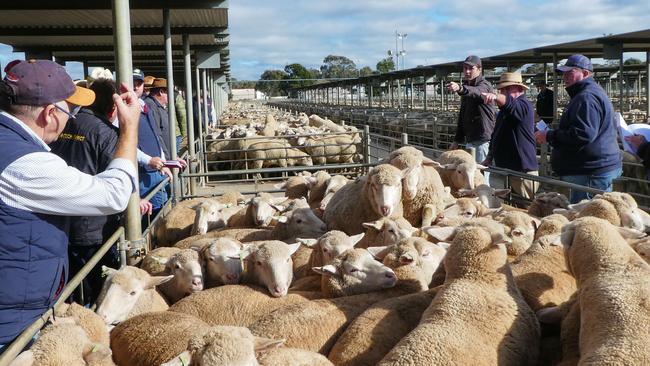Uncertainty has lamb market on edge
Next move ‘at the mercy of the gods’ as buyers stay away while coronavirus jitters undermine confidence.

UNTIL there is more clarity around the extent of coronavirus in meatworks and how the southern processing sector will cope with this new wave of infections, it remains impossible to judge the next move of the lamb market.
A $20 to $30 price hit earlier this week could be followed by anything, good or bad.
For an industry that is associated with a lot of ego and speculation, the lack of opinion from agents and buyers was somewhat disconcerting following the Bendigo market this week.
What was once deemed unthinkable could now be possible in this new era of health taking precedence over almost every decision being made by governments.
That point was highlighted in this exchange retold by an auctioneer who had watched the cheaper opening of the Bendigo market, where big export lambs were struggling to make more than $200.
“I rang (the farmer) and said, ‘do you want me to pass your lambs in?’ He said, ‘don’t send them home, who knows, we mightn’t have anyone to sell them to next week’.”
The auctioneer went on to add: “We really are at the mercy of the gods.’’
It’s a conversation that, until this global pandemic began, would have been unthinkable. Just like the border closures between states, and the government making it mandatory to wear face masks in Melbourne.
But at some stage food security issues and the need to keep processing chains open will have to become a higher priority for decision-makers.
Such a scenario played out in the US earlier this year, and after their beef production plummeted, they have now ramped slaughter production back up again.
Australian farmers need more information about how meatworks are going to be handled during this health crisis, especially as it appears COVID-19 is going to be an ongoing issue.
Lamb has being hit hard by the amount of processing that is done in Victoria, compared with cattle, which is northern based, led by Queensland.
Holding old lambs in the hope the market bounces back is a difficult decision for many farmers to make at this time of year due to the pressure of lambs cutting teeth.
And on top of this, the sucker lamb season is starting with the prospect of building supplies from mid-August onwards.
While there is so much uncertainty as to where the lamb market could go next, there is plenty of data that explains why COVID-19 has been so harsh on this red meat compared with beef.
And the figures don’t paint an optimistic picture for lamb heading into the spring flush while people remain locked down and restaurants shut, both here and overseas.
The US is one of Australia’s major and most valuable export markets for lamb.
The Steiner Consulting Group just released its latest compilation of lamb-cut prices and retail insights.
The US Department of Agriculture tracks meat “features’’ in American grocery stores, akin to what we would call specials or promotions, such as spring lamb.
During June its survey of retail outlets counted 7095 lamb “features’’, compared with 9885 a year ago, marking a 28 per cent decline.
Steiner said the slowdown was due to a mix of less lamb being available and the price point being unattractive to consumers compared with other proteins.
Moving on to price, Steiner reported some big corrections for high-value cuts of lambs that would usually make it into premier eating establishments in the US.
An example of this were reports imported lamb prices have been trending down, although the situation varies depending on the type of product.
“Frozen Australian cap off racks for the week ending June 26 were 31.5 per cent lower than a year ago. Frozen New Zealand product was down 25 per cent compared with last year,” one report said.
“On the other hand, prices for bone-in and boneless lamb legs are 3 to 6 per cent higher than last year. Generally, items that have more exposure to the retail market are doing better than high-value cuts that traditionally go into food service.”
It is another reason why authorities have to make sure the domestic market can keep ticking along during this health crisis, as supermarket sales will be vital to how prices perform for farmers this spring.
MORE


